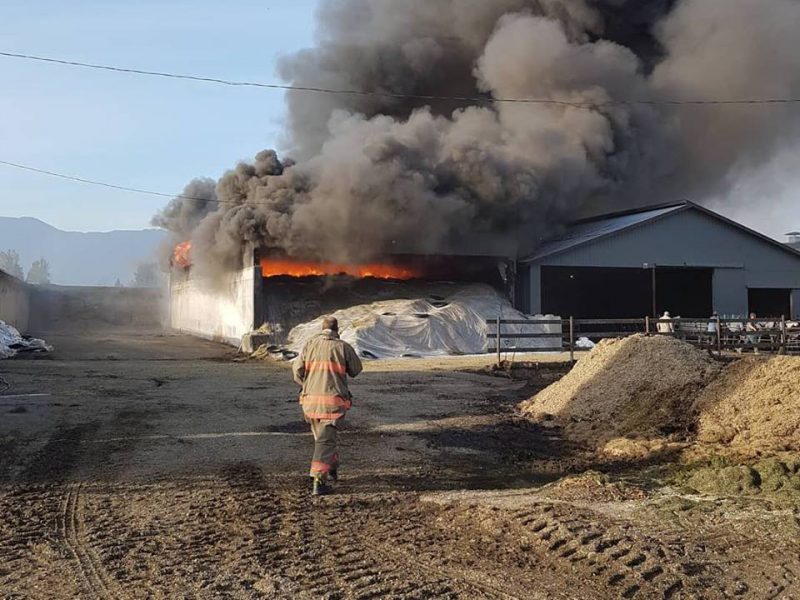ENDERBY—AgSafeBC urges farmers to inform themselves on the risks of corn silage fires.
The organization is working with the BC Ministry of Agriculture, BC Dairy Association, WorkSafeBC and relevant fire departments to determine the reasons behind five incidents of smouldering corn silage in the eastern Fraser Valley in September 2018.
Two of those episodes were full-scale fires resulting in the loss of structures.
Based on information gleaned so far, AgSafeBC safety advisor Tadgh O’Leary discussed how to reduce the risk of fire in corn silage at the 2019 North Okanagan Dairy Tour hosted by the Kamloops Okanagan Dairymen’s Association on August 13.
O’Leary says timing is key for producers.
“It’s the first 48 hours post-harvest; that is the real critical phase for these fires, we observed,” he says. “A lot of the heat is generated at that time with fresh silage so closely monitor your bunker this year in the first 48 hours post-harvest.”
Silage density is also important.
“What we do know … packing is one of the key features. If we get the packing right, we reduce the oxygen in the bunker,” says O’Leary.
A properly dense silage pile is packed in layers of four to six inches throughout the harvest with a weight of 800 pounds per ton of crop delivered per hour, he explains. Stressed, non-uniform, stunted or immature crops need to be packed more aggressively because the suboptimal condition of such crops can alter the ensiling process and associated timing.
Oxygen exposure can also be reduced by always keeping tarps and covers tight, and by taking extra attention with packing along the edges and sides to maintain good density.
He says silage should be stored in uncovered, non-flammable structures.
The silage bunker should have no available fuel sources such as plywood siding. Hay should not be used to weigh down the forage.
“Some bunkers have plywood for food-quality issues and over time that has become eroded and dried out and that can be a fuel source,” O’Leary notes.
Mixing old silage with new silage is also suspect as the dryness of the old silage could act as a fuel source.
Work continues to fully determine the cause of the corn silage incidents.
“The group will continue to monitor and review new information throughout the upcoming 2019 corn harvest season,” notes O’Leary.


 Oregon hazelnut optimism inspires BC growers
Oregon hazelnut optimism inspires BC growers